
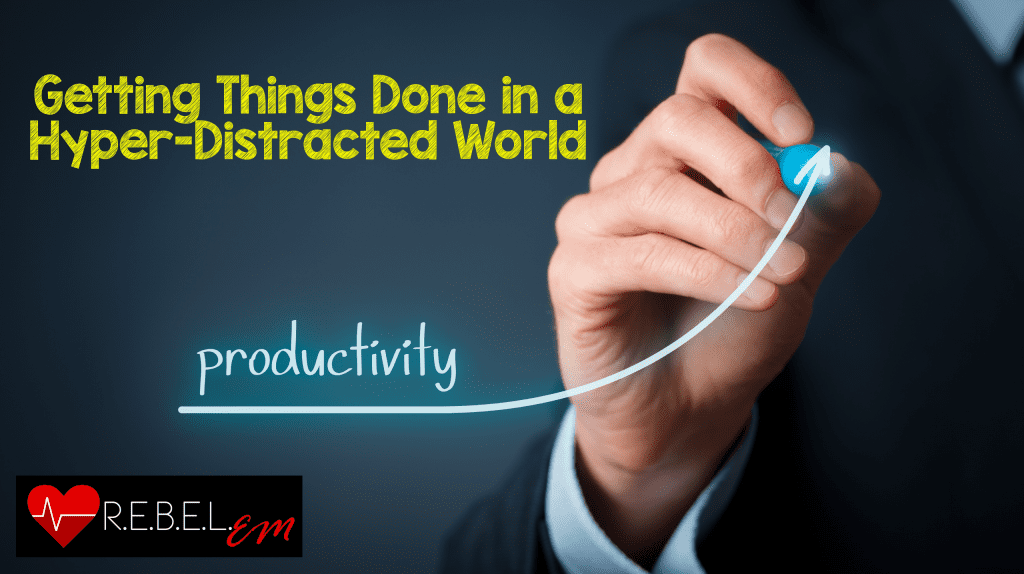 I have been accused by many of my colleagues and friends as being hypomanic. They always wonder how I get so much done. Do I function on 4 – 5 hours of sleep? Is it the fact that I am not married or don’t have kids? Well those things definitely help, but I think it’s because I have a rigorous structure in my daily life, that allows me to get so much done. Before we get into the post, I want to recommend two books to read that were recommended to me by my friend Scott Weingart: Getting Things Done by David Allen and Deep Work by Cal Newport. There are some pretty extreme ideas in both of these books, but if you can get past that, you can find truth in each of their arguments. These two books have changed the way I structure my daily life and have increased not only my productivity, but the quality of my productivity (i.e. Getting Things Done).
I have been accused by many of my colleagues and friends as being hypomanic. They always wonder how I get so much done. Do I function on 4 – 5 hours of sleep? Is it the fact that I am not married or don’t have kids? Well those things definitely help, but I think it’s because I have a rigorous structure in my daily life, that allows me to get so much done. Before we get into the post, I want to recommend two books to read that were recommended to me by my friend Scott Weingart: Getting Things Done by David Allen and Deep Work by Cal Newport. There are some pretty extreme ideas in both of these books, but if you can get past that, you can find truth in each of their arguments. These two books have changed the way I structure my daily life and have increased not only my productivity, but the quality of my productivity (i.e. Getting Things Done).
Let’s Start with Some Stats?
In July 2012 the Mckinsey Global Institute published a survey [1] with some pretty interesting stats about the percent of the average workweek spent with technology:
- >60% of our time is spent on electronic communication and internet searches
- ≈30% of that 60% is spent on email alone
- This leaves ≈40% of our time to get things done
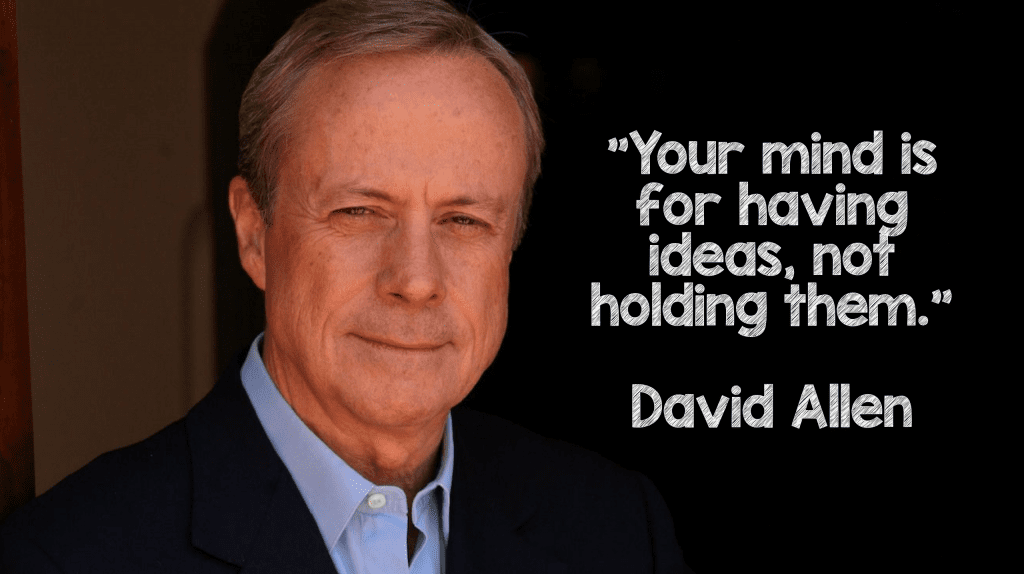
In an observational study of 3 emergency departments, 18 staff ED physicians were observed for 2 hours at a time [4]:
- ED physicians interrupted on average 12.5x per hour
- ED physicians rarely delayed the interruptions 0.8x per hour
What Structure do I Use in Getting Things Done?
- Capture (Collection)
- Clarification (Processing)
- Organizing
- Reflection (Reviewing)
- Engaging (Actually Doing)
Capture (Collection):
- New Ideas: I jot all my new ideas in a Moleskin notebook or Drafts app (Capture text and send it to almost anything) ($4.99 US)
- Social Media: I use the Pocket app to save all social media I want to come back to later
- Email: Email is its own capture technology, so there is nothing additional to do. Email is also a bit more complicated, check out the clarification section for more details
- Blogs: I use Feedly (News aggregator) to capture all the new blog posts that are published on a daily basis
-
New Publications: For this I use two things in particular:
- Read by QxMD, a free app that lets you see what is being published online before it ever hits print. This app allows you to follow up to 15 journals of your choosing. If you work at an academic institution, you can put in your libraries proxy, and if they have a subscription to the journal, you also get the PDFs for free.
- Pubmed Alerts: This one is simple, just create a free account and send yourself emails as frequently or infrequently as you want about what has been published in the journals you choose to follow. Want to know how to do this? Checkout this great post by Natalie May at St. Emlyn’s Blog: Pubmed Alerts.
Clarification (Processing):
-
Email: The goal here is to get to Inbox 0. This doesn’t mean having zero emails, it means having zero actionable items in my email. I really only deal with my email in the mornings or maybe evenings depending on my clinical schedule. I don’t bother messing with email during the day. Anyone who needs to get a hold of me urgently already has my cell phone number and can call or text. I generally divide email into 4 categories
- Action: If it’s something I need to do (single action) or a project (multiple actions to complete) I transfer all this into the Omnifocus App (Standard $39.99 US) so I can set dates/deadlines for myself
- Reference: I download all my PDFs into the Evernote App. The beauty of this is you can search for any term within the PDF, to quickly find what you are looking for.
- Events: I set these up in my calendar so I know when things are upcoming
- Spam: Simply delete
After Capture and Process, I essentially have 6 categories I need to organize and review
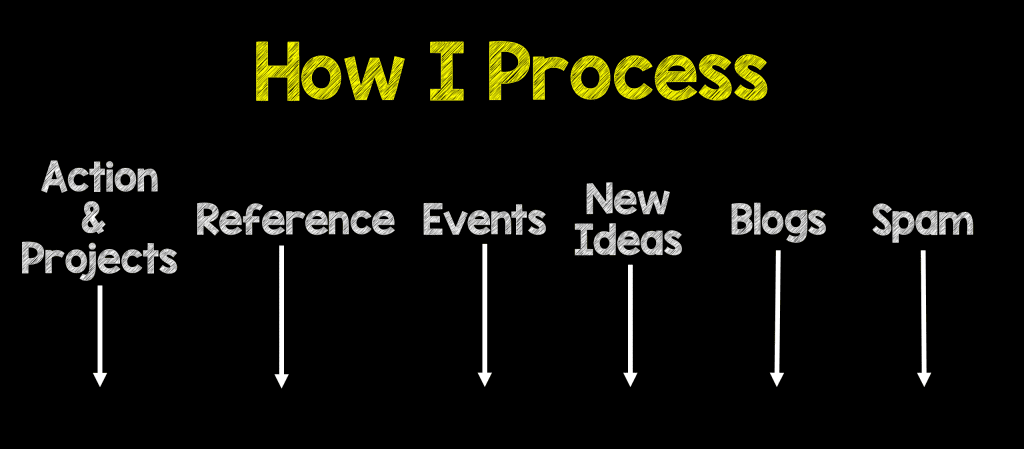
Organizing:
- Calendar: I am a Mac guy so I use iCal and sync this with all my devices, but google calendar works as well. This is a great way to keep track of what you have upcoming
- Omnifocus: This is essentially a task manager. I turn all my action items into actions (Single Action) or Projects (Takes several steps to accomplish)
- An important caveat here is to never overbook yourself on any given day. No more than 3 actions or projects on any given day
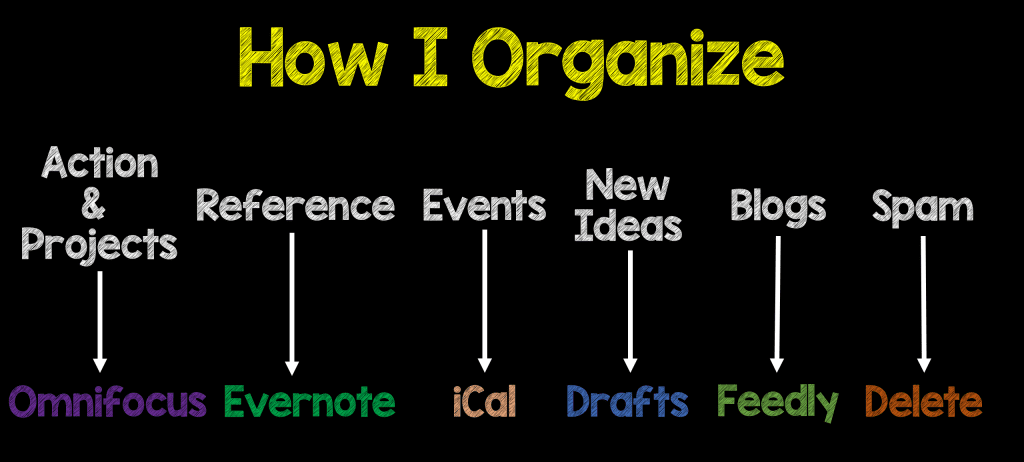
Reflection (Reviewing):
- Daily: Check Omnifocus, email, drafts, feedly, social media (pocket app), and look at my next day on my calendar
- Weekly: Look to see what my schedule looks like the next week (This is important so you are not waiting until the last second to get things done)
- Monthly: Look to see what I have scheduled for the next month (This helps in not overbooking yourself)
- Yearly: This is where I set my big goals for myself. This is what I want to achieve over the next year. This is important because it can help make decisions of yes or no when asked to work on things. Does this help me with my big goals or is it going to be a distraction?
- In EMCrits Podcast 206, Scott introduced an interesting concept on how to decide on saying yes or no to requests (i.e. Speaking at a conference, Working on a book chapter, etc…). I have incorporated this into my decision making. The image below depicts this concept:
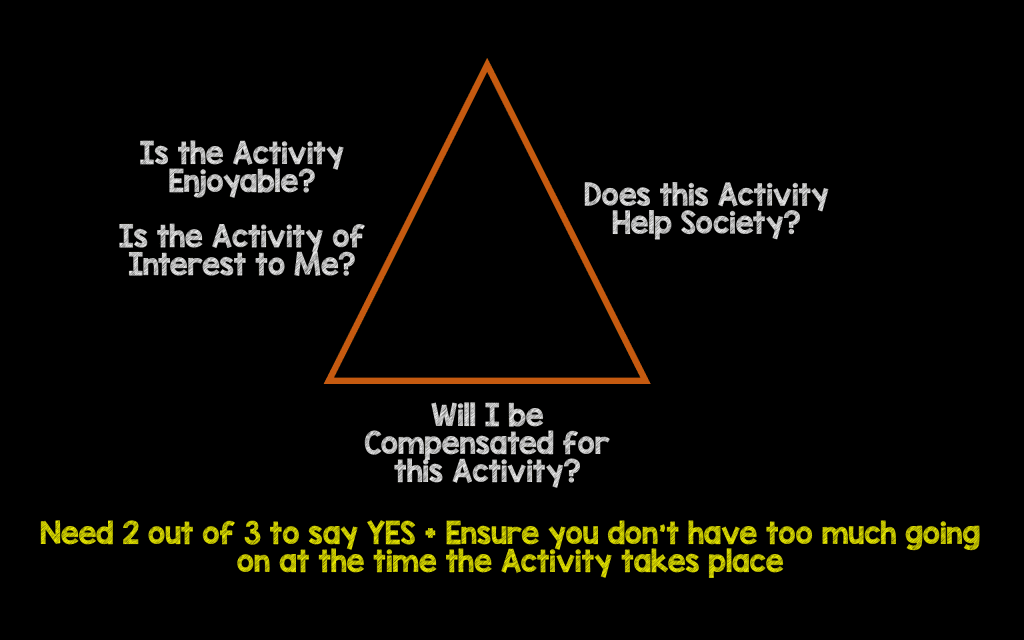
Engaging (Actually Doing):
- Work on my actions and projects without distractions during scheduled times I have allotted myself
Other Things I do to Help Stay Focused:
- Kill all the push notifications on your phone (Reduce distractions): I no longer get social media or email updates on my phone or any of my mobile devices. Just think every time your phone beeps or buzzes your first instinct is to see what is going on. Just kill these distractions and check them on your own time not on others time.
- Schedule time with no interruptions (Deep work without distractions): I generally schedule 2 – 4 hour blocks on days that I don’t work clinically to work on projects, whatever they may be, without any distractions (professional activities performed in a state of distraction free concentration). These blocks of time do not occur everyday.
- Have downtime (Re-energize): It is important to give your mind time off in order to improve insights, and recharge your energy. Examples of this maybe running, meditation, yoga, etc… One other thing I will mention here is I never work on anything when I am post night shift, as this is a day for me to reenergize
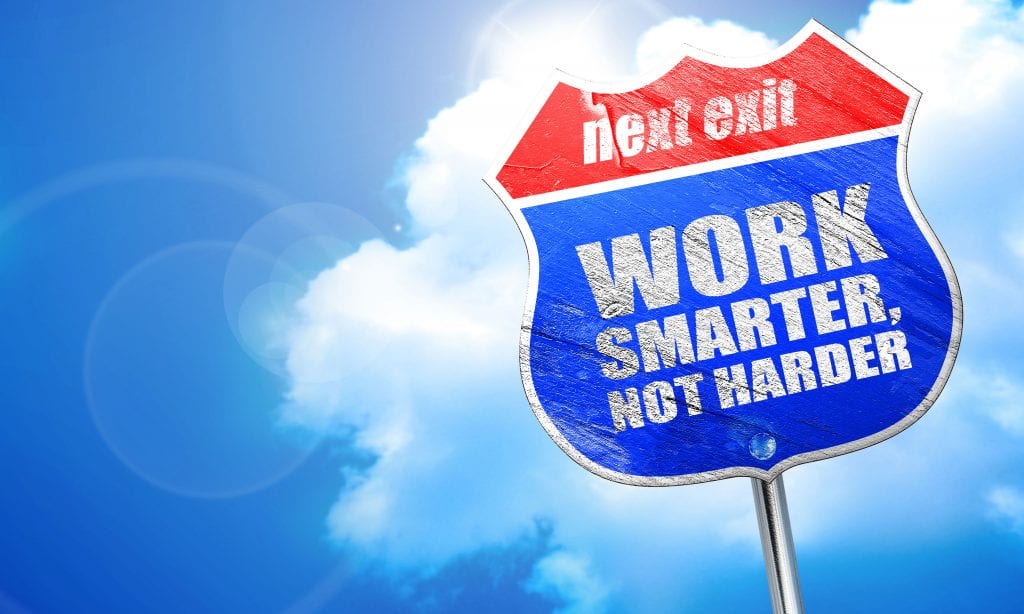
The Bottom Line for Getting Things Done:
- Minimizing Distractions (clearing your mind) eliminates stress and helps increase creativity/productivity
- Busyness ≠ Productivity
- High Quality Work = Intensity of Focus + Time Spent
References:
- Mckinsey Global Institute. The Social Economy – Unlocking Value and Productivity Through Social Technologies. July 2012 [Link HERE]
- Getting Things Done Website [Link HERE]
- Deep Work Website [Link HERE]
- Ratwani RM et al. Emergency Physician Use of Cognitive Strategies to Manage Interruptions. Ann Emerg Med 2017. PMID: 28601266
For More on This Topic Checkout:
- Scott Weingart at EMCrit: Podcast 136 – Getting Shit Done
- Scott Weingart at EMCrit: Podcast 209 – GTD Redux – Opportunities, Time, & Future Selves
Post Peer Reviewed By: Anand Swaminathan (Twitter: @EMSwami)
The post Getting Things Done in a Hyperdistracted World appeared first on REBEL EM - Emergency Medicine Blog.
